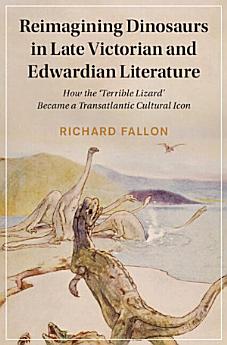Reimagining Dinosaurs in Late Victorian and Edwardian Literature: How the ‘Terrible Lizard' Became a Transatlantic Cultural Icon
Nov 2021 · Cambridge Studies in Nineteenth-Century Literature and Culture Book 132 · Cambridge University Press
Ebook
305
Pages
reportRatings and reviews aren’t verified Learn More
About this ebook
When the term 'dinosaur' was coined in 1842, it referred to fragmentary British fossils. In subsequent decades, American discoveries—including Brontosaurus and Triceratops—proved that these so-called 'terrible lizards' were in fact hardly lizards at all. By the 1910s 'dinosaur' was a household word. Reimagining Dinosaurs in Late Victorian and Edwardian Literature approaches the hitherto unexplored fiction and popular journalism that made this scientific term a meaningful one to huge transatlantic readerships. Unlike previous scholars, who have focused on displays in American museums, Richard Fallon argues that literature was critical in turning these extinct creatures into cultural icons. Popular authors skilfully related dinosaurs to wider concerns about empire, progress, and faith; some of the most prominent, like Arthur Conan Doyle and Henry Neville Hutchinson, also disparaged elite scientists, undermining distinctions between scientific and imaginative writing. The rise of the dinosaurs thus accompanied fascinating transatlantic controversies about scientific authority.
About the author
RICHARD FALLON is a Leverhulme Trust Early Career Fellow at the University of Birmingham.
Rate this ebook
Tell us what you think.
Reading information
Smartphones and tablets
Install the Google Play Books app for Android and iPad/iPhone. It syncs automatically with your account and allows you to read online or offline wherever you are.
Laptops and computers
You can listen to audiobooks purchased on Google Play using your computer's web browser.
eReaders and other devices
To read on e-ink devices like Kobo eReaders, you'll need to download a file and transfer it to your device. Follow the detailed Help Center instructions to transfer the files to supported eReaders.









